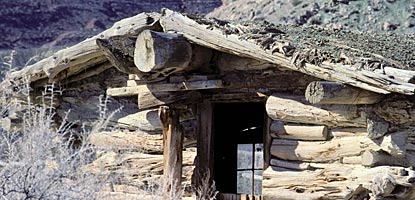Then, roughly two thousand years ago, the nomadic hunters and gatherers began cultivating certain plants and settled into the Four Corners region. These early agriculturalists, known as the ancestral Puebloan and Fremont people, raised domesticated maize, beans, and squash, and lived in villages like those preserved at Mesa Verde National Park.
While no dwellings have been found in Arches, the northern edge of ancestral Puebloan territory, there are rock inscription panels. Like earlier people, the ancestral Puebloans left lithic scatters, often overlooking waterholes where someone may have shaped tools while watching for game. People living in modern-day pueblos like Acoma, Cochiti, Santa Clara, Taos, and the Hopi Mesas are descendants of the ancestral Puebloans.
The Fremont were contemporaries of the ancestral Puebloans and lived in the same general area, so distinctions between the two cultures are blurry. However, Fremont rock inscriptions, pottery and other artifacts clearly demonstrate the existence of different technologies and traditions. Both the Fremont and the ancestral Puebloans left the region about 700 years ago.
As the ancestral Puebloan and Fremont peoples were leaving, nomadic Shoshonean peoples such as the Ute and Paiute entered the area and were here to meet the first Europeans in 1776. The petroglyph panel near Wolfe Ranch is believed to have some Ute images since it shows people on horseback, and horses were adopted by the Utes only after they were introduced by the Spanish.


No comments:
Post a Comment
Note: Only a member of this blog may post a comment.